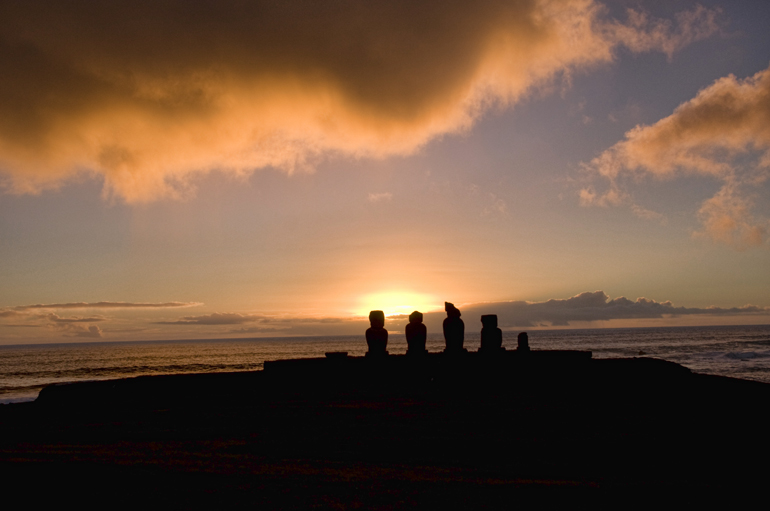
The Easter Islander's solution to the problem of statue transport provides the key to the fate of their society. They had only human power to drag the statues along, using tree trunks as rollers. Over time the population increased to about 7000, bringing with it intense competition among the clans to carve the most and biggest statues. Ultimately there were hundreds of ceremonial platforms and over 800 statues on their tiny singularity.
Then, when the society was at its peak, something mysterious happened. Hundreds of statues were abandoned, along transport roads and in various stages of completion at the quarry. A civilization came to a halt. How? Why? Civil war? Genocide? Theories abound. But the main force behind the falling star of Polynesia was environmental degradation brought on by massive deforestation of the entire island.
Gone with the trees were fishing boats and nets, fuel, construction material, and healthy soil to grow sweet potatoes. But just as important, without trees for transport there was no reason to carve statues. Thus the people had no work, as there was little else to do on Easter Island! The statues were also the backbone of their religious rituals and ceremonial customs. So too their spirit world collapsed. Thus in the end there was no food, no fuel, no work, no religion, and no escape.
The story of Easter Island presents, in stark relief, what happens when we lay waste the world around us. Their social order fell with the final tree, and the islanders became mired in the drawn-out paroxysms of societal and environmental collapse.
And then along came the Europeans.